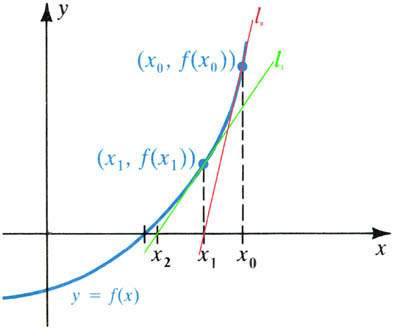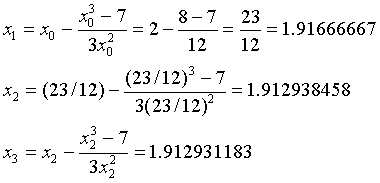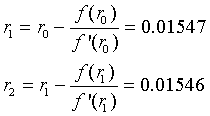|
|
Math 122 - Calculus for Biology II |
|
|---|---|---|
|
|
San Diego State University -- This page last updated 14-Oct-01 |
|
|
|
Math 122 - Calculus for Biology II |
|
|---|---|---|
|
|
San Diego State University -- This page last updated 14-Oct-01 |
|
Outline of Chapter
Immigration in Population Models
Earlier we saw that the United States population growth over a short period of time can be modeled using Malthusian growth. However, this growth model simply gave the net growth rate. A major factor in the growth of the population of the U. S. has been the inflow of immigrants. How can we distinguish between the population growth due to immigration and the growth from reproduction of the current residents? This is a very politically charged issue in Europe, where many of the countries are actually showing a loss in population (death rate is higher than birth rate) from the nationals, and all growth is due to immigration.
Let us examine the population growth using mathematical models for the U. S. between the years 1950, when the population was 151.3 million, and 1960, when the population reached 179.3 million. Soon we will be studying the continuous versions of the Malthusian growth model and see that the solution of the Malthusian growth model is given by
where P(t) is the population at any time t, P0 is the initial population, and r is the rate of growth. From the equation above, we see that the net rate of growth can be easily found by taking logarithms and solving for r, so
From the data above, we have
This gives a growth rate of about 1.7%.
It is known that through most of the 1900's the immigration rate, which has been regulated to prevent an excessive influx, has been fairly constant at around 250,000 per year. We will see that if the Malthusian growth model is modified to include an immigration rate m, then the solution to this model is
We would like to determine how much of the 1.7% growth rate is due to immigration and how much is the growth rate r (births - deaths).
The solution to the population growth model given above is substantially more complicated than the simple Malthusian growth. We cannot algebraically solve for the growth rate r in this equation. Thus, we need another means to solve this equation, and one good technique is Newton's method.
Newton's method is a technique for finding the zeroes of a function by iteration. You begin with an initial guess "near" the solution, then iterate until you have the desired accuracy for your answer. It is simply another discrete dynamical system!
We begin with a geometric analysis of Newton's method. Suppose we want to solve the equation
knowing that it has a root somewhere. We begin with an initial guess at some x0, then find the tangent line to the curve through the point (x0, f(x0)). From our previous work, we know that the slope of the tangent line at this point is f '(x0). Thus, the equation of the tangent line is given by
The next Newton iterate is found by finding where this tangent line intersects the x-axis. If we call this point x1, then we see that
or

Graphically, the red line below shows this first Newton iterate with the point x1 closer to the root of this function than the starting point x0. (This will not always be the case.)

The diagram above shows how the second Newton iterate is found in a similar manner to the first one with the resulting approximation significantly closer to the root of f(x). This process continues and either the successive iterations rapidly converge to the zero of f(x) or the Newton iteration fails to converge and a different "closer" initial guess is needed. In general, Newton's iteration formula is given by:

Note that this is just another discrete dynamical system.
Example: We begin by using this technique to find the cube root of 7.
Solution: Consider the equation
This equation clearly has the solution desired. Since f '(x) = 3x2, Newton's method becomes

Begin with an initial guess of x0 = 2. We show three Newton iterates.

This last value agrees with the cube root of 7.
Newton's Method and Immigration Model
We return to the immigration model given above. From above, the Malthusian growth model with immigration, m, is given by
We assume that m = 250,000, then use the census information from 1950 and 1960. We take P0 = 151,300,000, the 1950 population, and P(10) = 179 ,300,000, the 1960 with t = 10. This produces the equation
which can be rearranged to produce the equation
This is a nonlinear equation that can use Newton's Method to find the root r. We differentiate to obtain
We apply Newton's iteration formula with an initial guess of r0 = 0.017. The result is as follows:

Thus, the actual growth of the population during the decade of 1950 is 1.55% with an additional 0.152% resulting from immigration (or about 10% of the growth).
Computer uses of Newton's Method
Several of the computer labs have used the Solver function in Excel to find the least squares best fit to the data. It is a complicated routine, but part of the routine has Newton's method inside the program. If you click on the "options" button in Solver, you will be shown a list of options which affect the speed and accuracy of a Newton's iteration, as well as the number of iterations and time that Excel will expend on the problem.
Several of the Labs used Maple to find zeroes of functions or points of intersection. The routine used is fsolve in Maple. Once again, this routine has a Newton's method as part of its program.